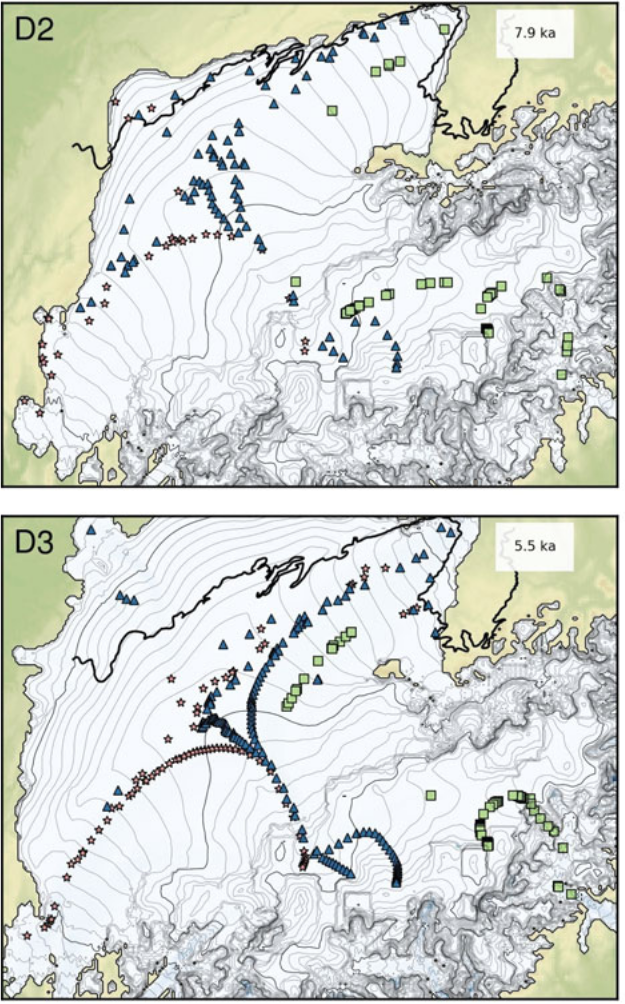Published: Jun 1, 2017 by The PISM Authors

| Title | Modelling the diversion of erratic boulders by the Valais Glacier during the last glacial maximum |
| Authors | G. Jouvet and others |
| Venue | J. Glaciol. |
Glacial erratic boulders in the Rhone Valley north of the Alps, which have intrigued scientists for two centuries, have characteristic lithologies which can be matched to source regions in the mountains. This study uses their locations, plus the maximum extent of the ice sheet (e.g. moraine mapping), to constrain a PISM model (Becker et al 2016) of the ice flow around the time of the Last Glacial Maximum (LGM, ~24ka b.p.). The 1 km grid, physically-comprehensive model, which includes membrane-stress-balanced sliding, polythermal thermodynamics, and earth deformation, generates the evolving ice geometry and velocity fields. The boulders are modeled as tracers within the time-dependent flow. The dominant flow fields in the Valley, including the distinctive erratics signature of the northeastern Solothurn ice sheet lobe, turn out to be insensitive to sliding parameters and bed elevation in the model. Instead, the authors are able to infer the paleo-climatic conditions responsible for the transport routes of the erratics. They show that only one tested precipitation pattern allows boulders to be (correctly) diverted into the Solothurn lobe during the LGM. This precipitation pattern supports, but suggests additional detail in, an existing theory of preferential moisture advection during the LGM. A spectacular video of a full simulation of the ice sheet, over the entire 120ka ice age cycle, is at co-author J. Seguinot’s website.
